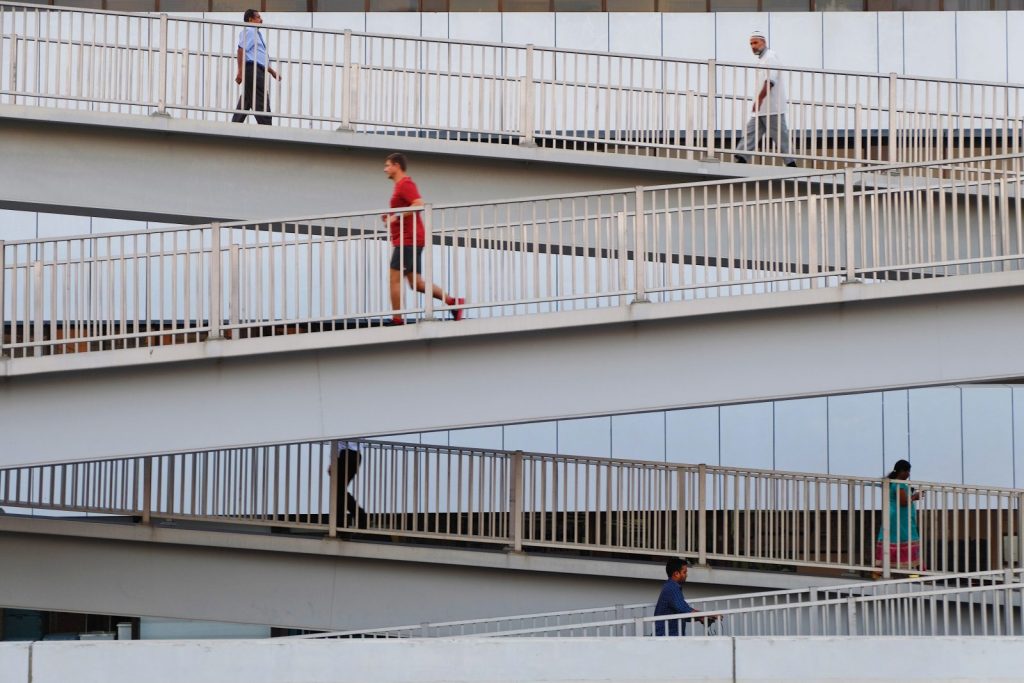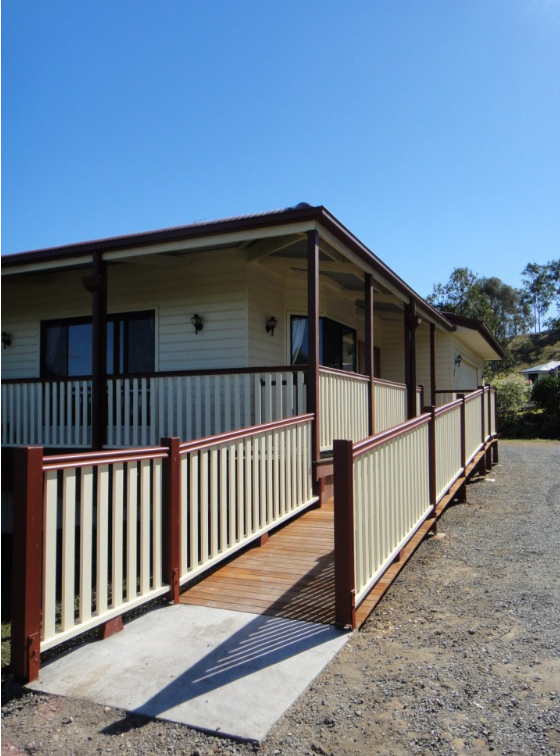
How To Design For Universal Access
One of the first steps to create a universal design is to remove steps and consider the ease of access to and from the home or office.
When designing solutions for access, we ensure that the wheelchair user will have a continuous path of travel free from overhanging branches or any other overhead obstructions. It is important that the path to the home has a minimum width of 1 metre, and consists of an even surface free from cracks, bumps or ridges.
Any entrance with a step greater than 5mm needs either an access ramp or threshold step to enable free access. In order to meet the Australian standards, an access ramp cannot exceed a gradient of 1 in 14, meaning that for every vertical meter in elevation, the ramp needs to span 14 metres horizontally. So in other words, an elevation of half a metre requires a ramp spanning at least 7 metres. For long ramps, we install landings at least every 9 metres where the wheelchair user can rest safely before ascending the next section. All ramps should also be equipped with handrails in order to pass the Australian access standards.

At VIP Access, we are also meticulous in creating the right design for the access ramps to ensure that they complement the surrounding structures and features of the building. We strive to make the ramp design implemented as part of the building, rather than stand out like an added fixture.
Another often neglected aspect is to consider the added space needed for parking for universal access. It is essential to have a relatively flat parking spot with a gradient of no more than 1:40. The parking bay also need to be wide enough to allow for side entry and exit with wheelchairs, as well as rear entry. Garages therefore need to be extra wide and long with an unobstructed 1 metre wide path from the exit point of the car to the entrance of the home or office.
When entering the home, we also ensure that the door opening exceed 1 metre, with easy to access locks and door handles that are not too high for a person sitting in a wheelchair. When using access ramps, it is essential to have a landing at the door where one can safely rest while unlocking and opening the door.
All in all, there are a lot of considerations for external access. And as a wheelchair user myself, I have experienced all the obstacles imaginable, giving me a unique insight into creating the best and most practical solutions for our clients.
